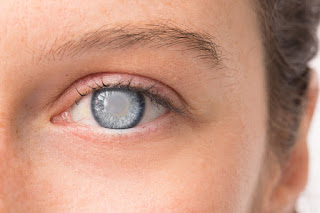What Should I Know about Cataracts?

Cataracts are changes in clarity of the natural lens inside the eye that gradually degrade visual quality. The natural lens sits behind the colored part of the eye (iris) in the area of the pupil, and cannot be directly seen with the naked eye unless it becomes extremely cloudy. The lens plays a crucial role in focusing unimpeded light on the retina at the back of the eye. The retina transforms light to a neurologic signal that the brain interprets as vision. Significant cataracts block and distort light passing through the lens, causing visual symptoms and complaints. Cataract development is usually a gradual process of normal aging, but can occasionally occur rapidly. Many people are unaware that they have cataracts because the changes in their vision have been so gradual. Cataracts commonly affect both eyes, but it is not uncommon for cataracts in one eye to advance more rapidly. Cataracts are very common. Experts have estimated that visual disability associated with ca...


